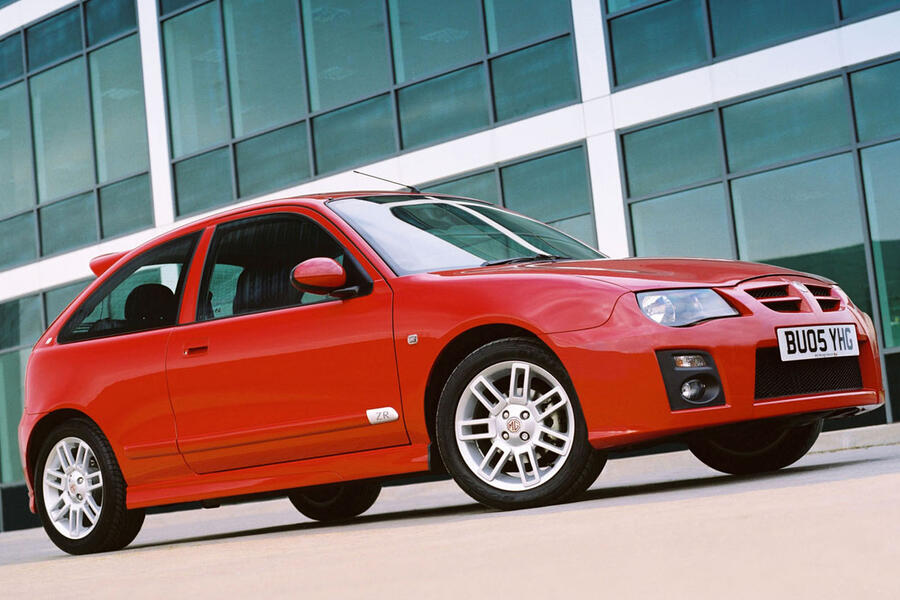[ad_1]
The ZR was launched in 2001 as a sporty take on the Rover 25. Available as a three- or five-door, it had stiffened and lowered suspension, a bodykit and smart alloy wheels. Buyers could choose from three Rover K-series petrol engines: a 1.4 producing 102bhp and badged 105, a 1.8 producing 115bhp and badged 120, and a 1.8 VVC producing 158bhp and badged 160. So you don’t get them mixed up, the 105 has brake discs at the front and drums at the back, while the other two have discs all round, vented at the front. The 160’s are larger and it has ABS, too.
There were two 2.0-litre diesel versions, by the way. SMG has a 2004-reg ZR 2.0 TD 115 with just 10,000 miles, another legacy of its 300-car purchase and which it’s selling for £5995. However, it’s the petrols that interest us and which interested buyers back in the day. The 105 was the big seller. The 120 is quicker and the 160 quicker still (it can hit 62mph from rest in 7.4sec), but you have to work the engine to notice. At the time, Autocar’s road test of the 160 (which then you could buy for £12,625) damned the model with faint praise, remarking how comfortable it was before noting how soft and rubbery the car felt in corners. At least now you know how a good used one should feel.

Anyway, regardless of what the testers thought, the ZR was a hit, especially with young drivers who appreciated its looks, performance and value for money. It was facelifted in 2004 (by Peter Stevens of McLaren F1 fame). Some bemoaned the switch from four to two headlights but few could argue with the improvements in fit and finish. At the same time, two trims – called Trophy and Trophy SE – made an appearance, the former featuring a sunroof, the latter air conditioning. And then, in 2005, it was game over. Still, it was fun while it lasted.
How to get one in your garage
An expert’s view
Nick Newey, Summit Garage: “We’ve been MG dealers since 1945 and I’ve been working on Rovers and MGs for 34 years. If we get a good ZR in stock, which we do from time to time, it sells quickly. The model still looks good but it looked even better with its go-faster decals, alloys and low-profile tyres. Because it was so light, all three petrol versions were nippy and fun to drive. The engines were generally reliable, let down only by the head gasket. It’s why you should check the filler neck for emulsion and the coolant for oil contamination. Rust never used to be a problem but that might not be the case 15 years on.”

[ad_2]
